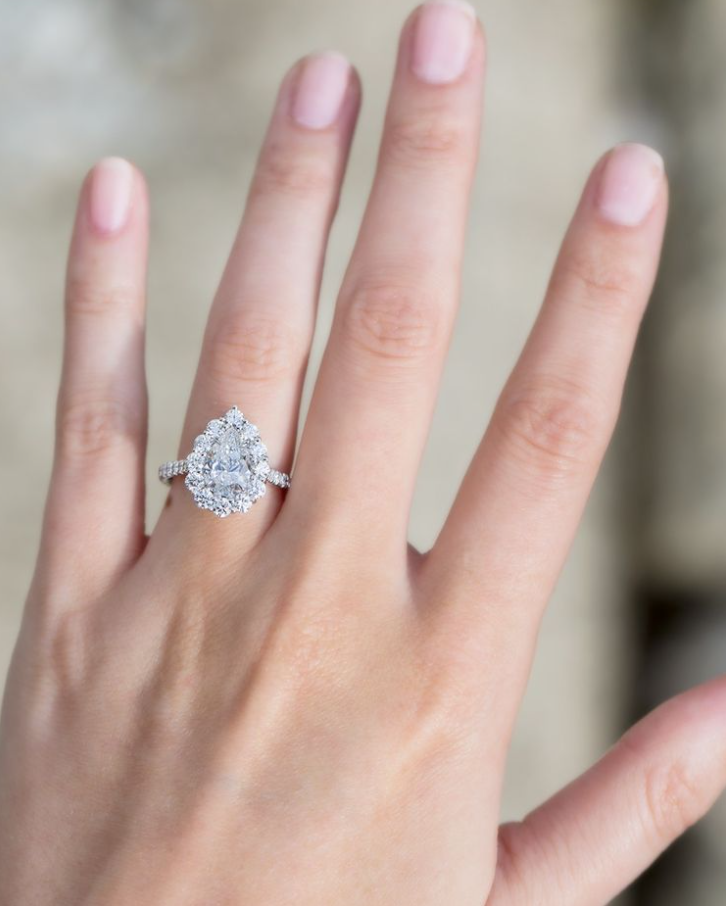Timeless Beauty: A Dive into Vintage Engagement Ring Designs and Settings
Keywords: engagement ring, Diamond Jewelry, vintage engagement rings
Purchasing an engagement ring can frequently appear overwhelming. It can seem like there are countless options if you don't know where to begin. Because they are rich in history and character, vintage engagement rings are growing in popularity.
What Makes an Engagement Ring Vintage?
For a piece to be classified as vintage, it must be older than 20 years but younger than 99 years, according to Estate Diamond Jewelry. Vintage and antique refers to anything that is more than 99 years old. If you're searching for a distinctive engagement ring with loads of personality, vintage pieces are a terrific option because they are frequently one-of-a-kind.
Vintage and Antique Styles
To help you limit down your options after deciding on a vintage or antique engagement ring, it's best to choose a time period you enjoy. In order to facilitate your decision-making process, we have included a few well-liked historical settings and styles.
Edwardian
Platinum was first used by jewelers in their creations during the Edwardian Period (1890–1915). Although Edwardian objects are sometimes categorized as antiques rather than vintage, they also fall within the vintage category because they were so popular that they were still made long after 1915.
Large central stones and millegrain borders were highlights of this era's jewelry. Sapphires and aquamarine gemstones were frequently used in addition to diamonds, which were the preferred jewel. During this period, marquis, oval, and round shapes were highly favored. Jewelry from the Edwardian Era frequently had glitzy bands and stones. A stacked ring design was frequently created by styling multiple rings together.
Art Nouveau
Art Nouveau pieces are sometimes regarded as antique, much like those from the Edwardian Era. Although very ornamental, Art Nouveau pieces (1895–1915) were not as lavish as those from the Edwardian period. Nature motifs were prevalent in jewelry during this time period, which was distinguished by flowing lines and continuous designs. Pieces in the shape of flowers were quite popular.
Art Nouveau gave greater weight to the piece's entire design than to the size and placement of the jewels, in contrast to the Edwardian Era, which was characterized by big stones and striking patterns. These designs frequently feature diamonds, sapphires, and opals.
Art Deco Era
Jewelers of the Art Deco Era (1915–1935) placed a strong emphasis on beauty and repetition in their designs. White gold was a preferred medium, and colored gemstones were widely used. Some synthetic gemstones were introduced as a result of this period's innovation. Sharp angles, clean lines, and elaborate patterns are characteristics of Art Deco designs.
Retro Era
Jewelry from the Retro Era (1935–1950) continues to have an influence today. Due to World War II, the majority of jewelry from this era was composed of sterling silver or gold. Since platinum was utilized to build weapons and other materials during the war, jewelers were prohibited from buying it. Synthetic rubies became a mainstay in jewelers' designs since real gemstones were difficult to get. Engagement rings from the Retro Era were frequently big and three-dimensional, in contrast to the flat Art Deco designs. Wide gold bracelets and large earrings were popular accessories.
Vintage settings
It's time to choose the setting that will best showcase the stone now that you have it. Five of the most well-liked vintage settings that would go well with your antique stone have been included here.
Cluster
Several little diamonds are arranged in a cluster setting to give the appearance of a larger diamond. There are countless possibilities in this situation. One giant stone combined with small stones or a number of small stones could be your choice. Furthermore, there are countless options available for the design of your engagement ring. One of the most popular shapes for this context is a circle, but you can also use more unusual shapes, like a flower.
Compared to a conventional four-prong setting, cluster rings might have more personality. Because buying multiple little diamonds will be less expensive than buying one enormous diamond, this style is also a fantastic economical choice.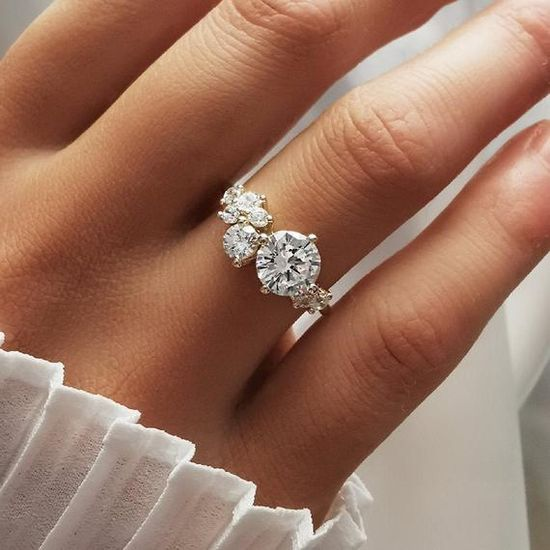
Bezel
For vintage engagement rings, the bezel setting is a timeless design. No prongs are used in this configuration. Rather, a bezel consists of a metal band that completely encloses the stone. This is one of the most secure setting kinds, providing greater protection than a conventional prong setting. The stone is less vulnerable to harm as a result of this additional protection. The most popular bezel settings are for diamonds that are round or oval in shape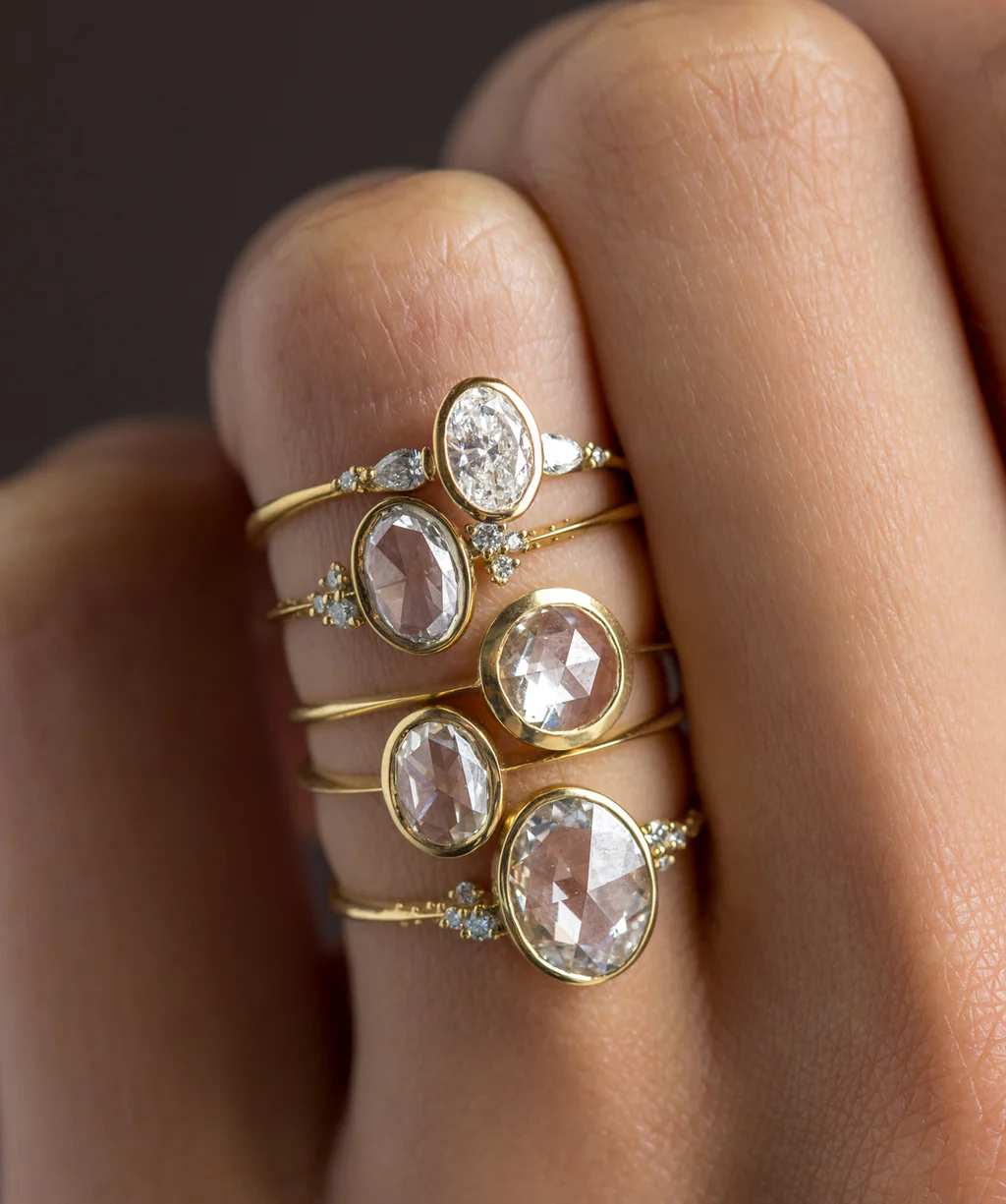
Three Stone
It is said that the three stone ring arrangement represents the past, present, and future of a partnership. As an alternative, it can stand for "friendship, love, and fidelity." The three stone setting, sometimes referred to as trilogy rings, usually consists of one huge stone flanked by two equal-sized lesser stones. The weight of the center stone is equal to the sum of the weights of the two outside stones.
If you want a more conventional engagement ring, this setting can be a more affordable choice. A stunning sapphire surrounded by two lesser diamonds could be used as the focal stone instead of a diamond. On the other hand, you might have two little sapphires encircling a diamond in the middle. The options are unlimited when using the three-stone setting.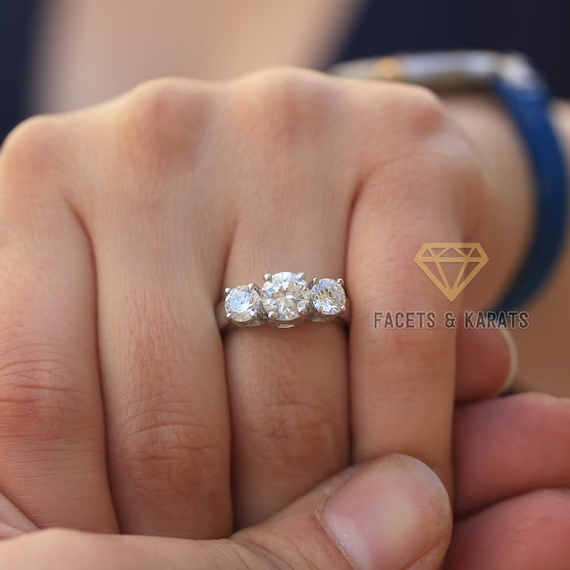
Pavé Setting
The process of adding more complex to a metal band is called pavé setting, or bead setting. The pavé engagement ring setting, which is derived from the French word meaning "to pave," entails a painstaking procedure that includes drilling tiny holes into the metal band's surface and inserting the stones into them. The stones are then secured in place by metal beads.
Smaller diamonds, usually weighing between 0.01 and 0.02 carats, are more frequently set in this style. Other ring settings, including the cluster or halo setting, go nicely with pavé. The ring of your engagement would look fantastic with a pavé setting if you want to add more glitz and sparkle!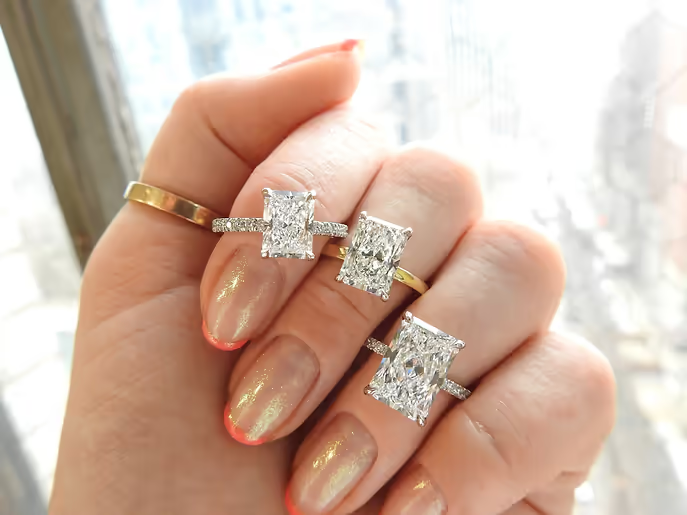
Halo Setting
In order to provide a halo-like effect, a single central stone is surrounded completely by a number of smaller stones. This type of engagement ring is ideal for people who desire a larger diamond without breaking the bank because it adds glitter and makes the center stone appear larger!
You can decide to use a gemstone, like aquamarine, as the focal point and encircle it with tiny diamonds. This is a protective setting that will shield your center stone in addition to adding glitz. We advise searching for a halo setting if you want to combine modern and vintage engagement rings.